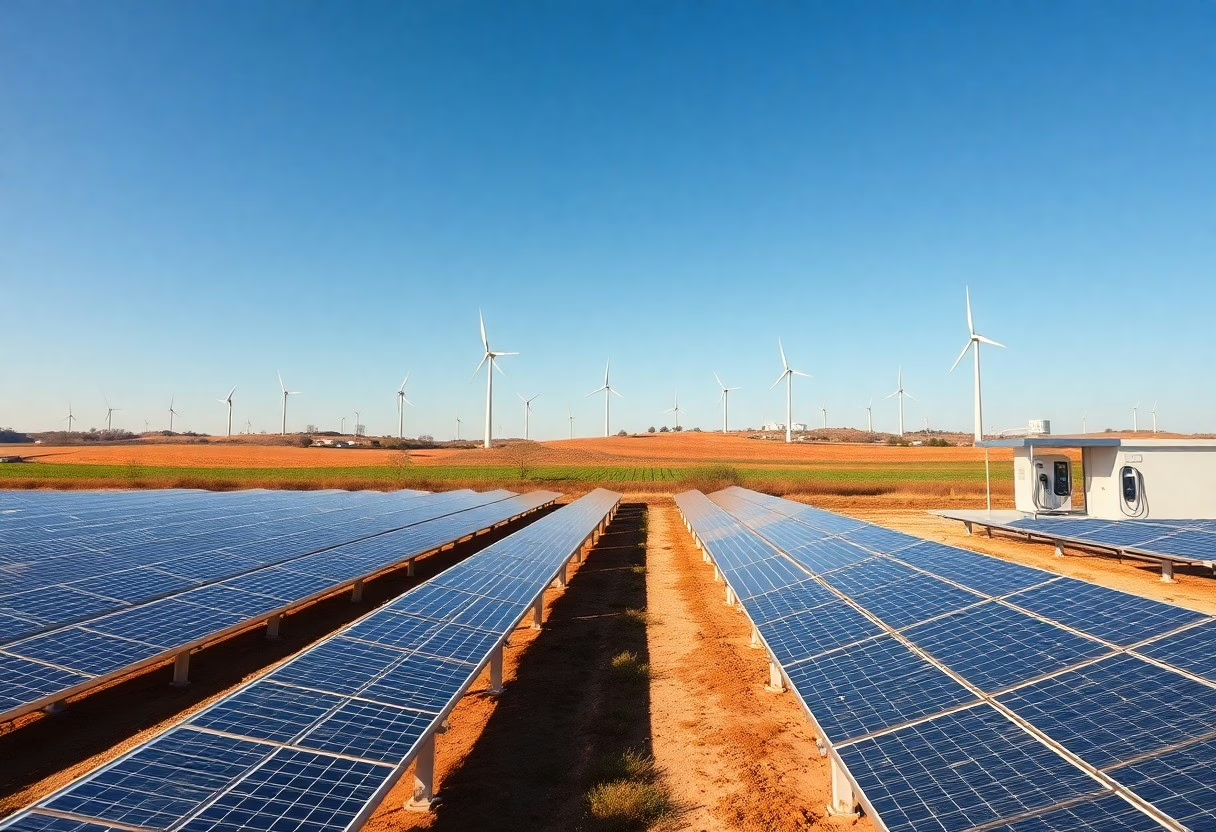Just as you may feel the weight of climate change, technology is stepping up to lighten this burden through innovative solutions. In this post, you’ll discover how green tech innovations are transforming the landscape of environmental sustainability. From renewable energy sources to cutting-edge carbon capture systems, these advancements not only benefit the planet but also enhance your everyday life. Join us as we explore the remarkable ways your choices and technology can collaborate to create a healthier future for all.
Energy Revolution: The Rise of Renewable Sources
As traditional energy sources dwindle, a remarkable shift towards renewable energy is emerging. This energy revolution showcases solar, wind, and other sustainable practices that not only reduce carbon emissions but also offer long-term economic benefits. You can witness this transformation in your community with developments in cleaner energy practices powering homes and industries alike. Solar panels on rooftops and offshore wind farms are now common sights, demonstrating that a sustainable future is within reach.
Recent advancements in solar technology have significantly improved efficiency and reduced costs. You can now access solar panels that convert sunlight into electricity more effectively than ever before, with some models achieving over 23% efficiency. The price of solar installations has dropped by nearly 90% in the past decade, making it a more viable option for both residential and commercial use. This accessibility not only empowers you to harness clean energy but also promotes energy independence and sustainability in your everyday life.
Innovations in turbine technology are reshaping the wind energy landscape, making it more efficient and feasible. New designs, such as vertical-axis wind turbines, are gaining traction thanks to their ability to operate in lower wind speeds and in urban areas. Furthermore, advancements in materials have led to lighter, stronger blades, resulting in increased energy capture. Manufacturers are deploying larger, more efficient turbines that can generate significant power at lower wind speeds. For example, the new Siemens Gamesa SG 14-222 DD turbine produces up to 15 megawatts of power, which is enough to supply thousands of homes.
Carbon Capture: Transforming Emissions into Opportunities
Carbon capture technology represents a significant breakthrough in combating climate change, providing a means of intercepting carbon emissions before they enter the atmosphere. By harnessing this innovation, industries can turn a dangerous byproduct into a valuable resource. Advanced carbon capture systems not only help mitigate environmental impacts but also open new pathways for economic growth.
Modern carbon capture technologies utilize a combination of chemical and physical processes to extract carbon dioxide from industrial emissions. Techniques such as direct air capture and post-combustion capture are designed to process air or exhaust gases, trapping CO2 for storage or utilization. You benefit from these innovations, as they significantly reduce the overall carbon footprints of power plants, manufacturing facilities, and other emissions-heavy sectors.
Numerous commercial applications of carbon capture showcase its potential to revolutionize various industries. Facilities in the cement, steel, and energy sectors are adopting these technologies to cut emissions and comply with stringent regulations. For instance, the Petra Nova project in Texas captures millions of tons of CO2 annually, repurposing it for enhanced oil recovery. Companies like Climeworks and Carbon Clean are leading the way in direct air capture projects that have demonstrated feasibility and financial viability.

Smart Grids: The Backbone of Sustainable Energy Management
Smart grids serve as a crucial framework for managing energy resources in a sustainable manner. By integrating advanced technologies like sensors, communication networks, and data analytics, smart grids enable efficient distribution and consumption of electricity. This technology allows for real-time monitoring and adjustments in energy flow, minimizing waste and enhancing reliability.
The Internet of Things (IoT) plays a pivotal role in boosting energy efficiency within smart grids. By connecting devices such as smart meters, thermostats, and appliances, you can optimize energy consumption in real-time. For example, smart home systems allow for remote monitoring and control, adjusting heating and cooling based on your preferences or even the weather forecast.
AI and big data analytics enhance the resilience of smart grids by predicting demand and detecting faults before they escalate. Machine learning algorithms analyze historical data to forecast energy needs, thereby optimizing resource allocation. Additionally, real-time data allows for quicker responses to anomalies, ensuring stable energy delivery and reducing outage times. By leveraging AI and big data, the smart grid becomes a dynamic entity capable of self-healing, with predictive maintenance identifying potential issues before they lead to failures.
Electrification: The Shift to Sustainable Transportation
Electrification is increasingly shaping the future of transportation, as you witness a gradual but determined shift towards sustainable mobility solutions. Cities around the world are adopting electric buses, bikes, and vehicles, aiming to reduce dependence on fossil fuels while improving air quality. This transition not only offers cleaner transportation options but also aligns with broader climate goals.
The rapid advancements in electric vehicle (EV) technology enhance performance, efficiency, and affordability, making them more appealing to consumers. Battery technology innovations, such as solid-state and lithium-sulfur batteries, are increasing energy density and reducing charging times. These improvements contribute to longer ranges, more accessible prices, and therefore, a more competitive alternative to traditional gasoline-powered vehicles.
A robust charging infrastructure is critical to driving the adoption of electric vehicles. Well-distributed charging stations alleviate concerns about range anxiety, enabling longer trips while encouraging more consumers to switch to EVs. Studies show that areas with extensive charging infrastructure experience a 50% higher uptake in electric vehicle sales compared to regions where charging options are limited.
Innovative Materials: From Waste to Resource
Transforming waste into high-performance materials stands at the forefront of green technology innovations. Companies are increasingly utilizing recycled plastics, agricultural waste, and even textiles to develop sustainable alternatives for everyday products. By redefining how materials are sourced and processed, these innovations not only reduce reliance on virgin resources but also contribute to a significant decrease in overall environmental footprint.
Biodegradable materials are changing your approach to product lifecycles by offering a sustainable choice that breaks down naturally, minimizing landfill impact. Innovations such as plant-based plastics and natural fibers can replace petroleum-based counterparts, ensuring that products not only serve their purpose but also return to the Earth after use.
Circular economy models prioritize resource efficiency by designing products with reuse and recycling in mind. This strategy shifts you away from the traditional linear economy towards a more sustainable system that maximizes the lifespan of materials. Companies like IKEA are leading the charge by committing to using only renewable or recycled materials in their products by 2030. This model encourages collaborative consumption, where you might lease items instead of purchasing them outright, promoting multiple use cycles.
Conclusion
Green tech innovations play a pivotal role in combating climate change. By embracing renewable energy, sustainable agriculture, and efficient waste management, you can contribute to a healthier planet. Investing in these technologies not only lowers your carbon footprint but also inspires others in your community to take action. As advancements continue to emerge, your engagement with these innovative solutions will shape a sustainable future for generations to come.



